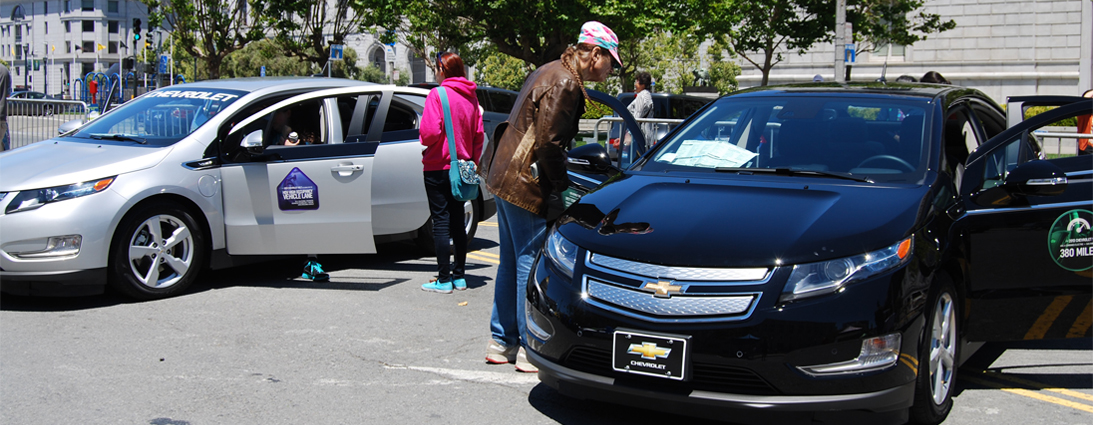


Although some recent work by the Union of Concerned Scientists and the Consumer’s Union shows encouraging signs about electric vehicle (EV) awareness generally in California, roughly 75 percent of those surveyed did not know the state offers significant rebates for electric cars and 80 percent were unaware of the substantial federal tax credit.
Part of our mission at CSE is accelerating EV awareness through outreach and education as administrators of the California Air Resources Board’s Clean Vehicle Rebate Project (CVRP), which provides cash incentives for the purchase or lease of eligible EVs.
Among our primary methods for educating potential EV-ready new car shoppers is participation in community and industry events. However, our participation in events is limited by staff availability and resources, so how can we direct CVRP program efforts to reach the people most likely to acquire an EV?
Data-informed strategic outreach
One way to strategically target supportive resources to receptive audiences is to focus on communities with residents who match the characteristics associated with EV adoption. Quite a bit of research has been done on factors related to EV adoption, which are broadly categorized as housing characteristics, demographics, local auto market composition, consumer preferences and attitudes, consumer behaviors and public support and incentives.
After gathering data in these categories to characterize California communities (some factors were easier to characterize than others), we tested these data for explanatory power. This reduced our dataset to the following.
- Log of mean household income
- Percent of the population with a graduate degree
- Owner-occupied housing with fewer than five units
- HOV lane miles within 30 miles of the census tract
- Urban/rural census tract designation
- New car ownership
- Non-pickup truck new vehicle market share
- Non-SUV new vehicle market share
We limited our initial analysis by focusing on battery electric (all-electric) vehicles (BEVs) because of the differences between fueling, range capacities and use between BEVs and plug-in hybrid electric vehicles (PHEVs).
Each of the community characteristics were included in a multivariate linear regression, where BEV market share was the dependent variable. The model explains about 54 percent of the differences in BEV market share between census tracts and, in general, performed well.
Examples in the Los Angeles area
Differences in expected BEV market share from area to area are clear in the Los Angeles region. Looking at side-by-side comparisons of the Pacific Palisades and Downtown areas, we see expected market share is dramatically different.
The Pacific Palisades area is a wealthy community with a large percentage of people with graduate degrees and households living in owner-occupied, single-family homes. Lots of new cars are purchased by Pacific Palisades households, and a low percentage of those new vehicles are pickup trucks.
Contrastingly, the Downtown Los Angeles area has lower mean incomes and percentage of people with graduate degrees and has a higher percentage of households renting multi-unit housing.
Figure 1: Expected BEV market share by census tract: Los Angeles area
These results are interesting, but largely mirror what we see in actual BEV market share calculations.
Perhaps more interesting is how expected BEV market share differs from actual BEV market share, which, setting aside model tuning implications, has interesting implications for targeting EV-related outreach and education. Areas that are underperforming what we expect based on the community characteristics, such as the Thousand Oaks area, might be a particularly interesting area for outreach, as there are large potential gains to be made just to catch the market up to expectations.
Figure 2: Difference between expected and actual BEV market share
Of course, there may be other factors in play in underperforming areas that aren’t accounted for by the model. Perhaps these areas are better suited to PHEV adoption, with longer commute distances and other factors contributing to increased range anxiety.
Future analysis will allow us to refine the model. We plan to do a separate analysis for PHEVs and to complete a related analysis with a focus on underserved car shoppers, an area of focus for the CVRP equity team.
CSE's Research and Anaylsis team works to better understand behaviors and decision-making among market actors in a variety of clean energy sectors.

